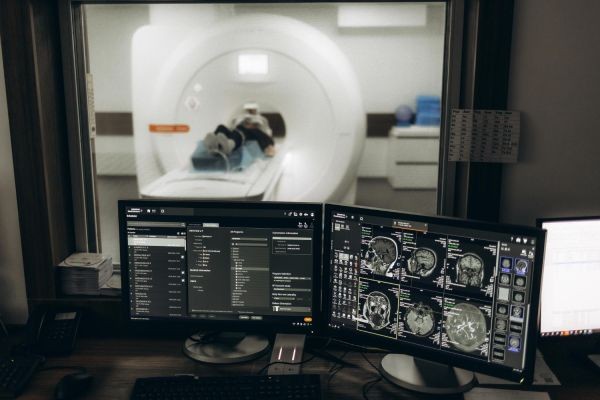Imagine a surgeon performing a minimally invasive procedure with the confidence that every detail, down to the smallest blood vessel, is vividly clear. Or consider a dermatologist examining skin abnormalities with unprecedented precision. Such advancements are no longer aspirations—they are realities enabled by 4K imaging technology in medical devices. But what drives this shift toward high-definition imaging in healthcare, and how does it address the challenges faced by medical professionals and patients alike?
The Pain Points of Traditional Medical Imaging
Medical imaging has long been a cornerstone of diagnostics and treatment. However, traditional imaging technologies often come with limitations:
- Lack of detail: Standard-definition imaging can obscure critical anatomical structures, leading to potential misdiagnoses.
- Delayed decision-making: Poor image clarity can require repeated scans, slowing down treatment decisions.
- Patient discomfort: Longer procedures due to suboptimal imaging can increase patient anxiety and reduce trust in care.
- Technological gaps: Older imaging systems struggle to keep pace with the demands of modern, precision-driven medical procedures.
For healthcare providers, these challenges translate into inefficiencies, increased costs, and potential risks to patient outcomes. Enter 4K imaging—a solution that’s transforming the medical field by delivering unparalleled clarity and precision.
What Makes 4K Imaging a Game-Changer for Healthcare?
4K imaging refers to resolution levels of 3840 x 2160 pixels, offering four times the detail of standard high-definition imaging. This advancement is proving to be a critical tool in addressing the pain points outlined above.
1. Unmatched Detail and Clarity
4K technology enhances visibility by delivering crystal-clear images. For example:
- Surgeons can navigate complex procedures, such as laparoscopy or neurosurgery, with heightened precision.
- Radiologists can detect microcalcifications in mammograms or early-stage tumors that might otherwise be missed.
This level of detail reduces diagnostic errors and supports better clinical decision-making, ultimately improving patient outcomes.
2. Enhanced Real-Time Visualization
In dynamic medical environments, real-time clarity is critical. 4K imaging supports:
- High frame rates for smooth, real-time visuals during procedures.
- Improved color accuracy to distinguish subtle tissue variations.
- Advanced zoom capabilities that retain image sharpness even at close range.
These benefits empower medical teams to act swiftly and accurately, whether during surgeries or routine diagnostic tests.
3. Reduced Patient Discomfort
Clear imaging minimizes the need for repeated scans or prolonged diagnostic procedures. For patients, this means:
- Less exposure to potentially harmful imaging modalities like X-rays.
- Reduced procedure times, alleviating stress and discomfort.
- Faster diagnoses, leading to quicker treatment initiation.
This not only improves the patient experience but also enhances trust in the care provided.
4. Seamless Integration with Advanced Systems
4K imaging is compatible with cutting-edge medical technologies, such as:
- Robotic surgical systems, where high-definition visuals are critical.
- Telemedicine platforms that rely on high-quality imaging for remote consultations.
- AI-powered diagnostic tools that require detailed visuals for accurate assessments.
This adaptability ensures that healthcare facilities can future-proof their investments while improving operational efficiency.
Addressing Customer Pain Points with 4K Imaging Solutions
Problem: Diagnostic Uncertainty
For medical professionals, the inability to identify critical details can lead to diagnostic uncertainty and patient dissatisfaction. 4K imaging eliminates this challenge by providing unprecedented clarity, ensuring accurate evaluations in complex cases.
Problem: Workflow Inefficiencies
Lengthy procedures due to suboptimal imaging disrupt workflows and increase operational costs. With 4K imaging, medical teams can perform faster, more precise interventions, boosting overall productivity.
Problem: Patient Anxiety and Distrust
Patients often feel uneasy during repetitive or lengthy diagnostic procedures. By reducing the need for multiple scans, 4K imaging creates a more comfortable experience, enhancing patient trust and compliance.
Real-World Applications of 4K Imaging in Medical Devices
1. Surgical Applications
In minimally invasive surgeries, where precision is paramount, 4K imaging provides:
- Superior visibility of anatomical structures.
- Better depth perception for safer interventions.
- Reduced risk of complications due to enhanced accuracy.
2. Dermatology and Aesthetic Medicine
Dermatologists can rely on 4K imaging to:
- Detect minute skin changes, such as early-stage melanomas.
- Conduct detailed assessments for cosmetic procedures.
- Enhance patient consultations with clear visual evidence.
3. Endoscopy
For gastroenterologists, 4K imaging offers:
- Clearer views of the gastrointestinal tract, enabling the detection of polyps or lesions.
- Improved visualization for biopsy procedures, ensuring accurate sampling.
4. Ophthalmology
In eye care, 4K imaging supports:
- Enhanced examination of retinal conditions.
- Precision during delicate surgeries like cataract removal.
Building Trust with Patients Through 4K Imaging
Trust is a cornerstone of effective patient care, and 4K imaging plays a vital role in fostering it. When patients see the sophistication of high-definition imaging:
- They feel reassured about the accuracy of their diagnoses.
- They understand the value of advanced technology in their treatment plans.
- They are more likely to engage actively in their healthcare journey.
Looking Ahead: The Future of Medical Imaging
The adoption of 4K imaging in medical devices is not just a technological leap; it’s a paradigm shift in patient care. By addressing critical pain points and delivering tangible benefits, this innovation is setting new standards for precision, efficiency, and patient satisfaction.
As healthcare continues to embrace technological advancements, 4K imaging will remain a cornerstone of medical excellence, driving better outcomes for patients and empowering professionals with the tools they need to succeed. The journey toward a healthier future is clearer—literally and figuratively—with 4K imaging at the forefront.


